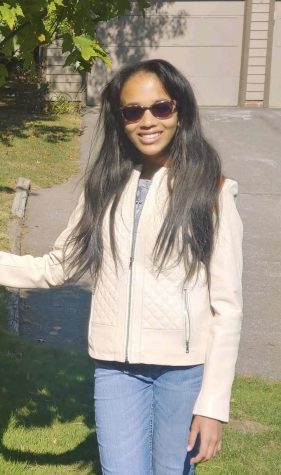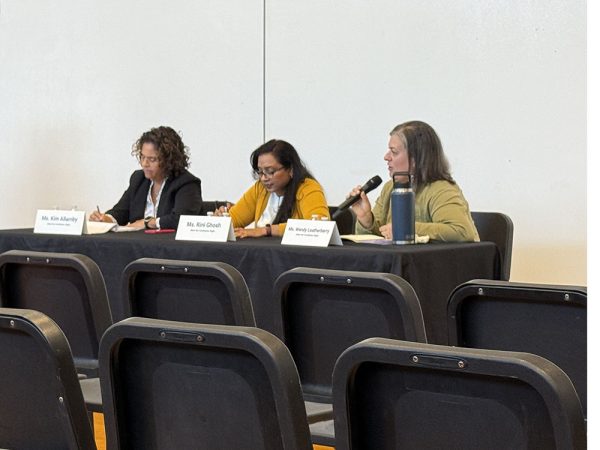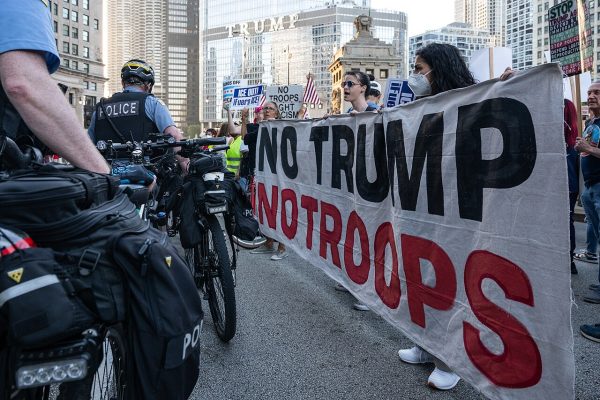Breaching the Social Distance
Beachwood implements community circles program to build connections in the wake of quarantine
Beachwood administrators have initiated a new community circles program this year, held after 10th period on Tuesdays and Fridays.
The purpose of the program is to support the social and emotional health of students during this time of social isolation and to facilitate connections with teachers and peers.
Principal Paul Chase explained how circles are designed to operate.
“Teachers have set procedures that they review before circles begin each time,” he said. “The teacher begins with questions and facilitates the discussion.”
“These parameters are expected to be followed so that everyone has a voice if they wish to speak,” he added.
Chase explained that circles are intended to address students’ mental health needs.
“Considering many people feel isolated during the pandemic, circles provide a venue to speak and share,” he said. “It is incredibly important that we stay connected. Circles are one way to keep us together during these difficult times.”
Guidance counselor Meghann Sullivan identified several ways she hopes that circles will promote mental health.
“…First, it gives students access to another adult who they are getting to know a little better and can reach out to (in or out of the circle) if they need something,” she wrote in an email. “Second, it can ultimately create a trusted peer group that students can lean on for support. And third, it gives an opportunity for some much needed socialization to help break up some of the isolation so many of us may be feeling right now.”
Senior Alexa Zarjetskiy has found the circles to be a positive experience.
“Circles are a time to talk to a few people who I normally don’t get to meet with and talk to.”
Beachwood administrators developed a community circles initiative as a restorative practice following the model of the “Leaving the Village” initiative created by educational consultant Kelvin Oliver.
Oliver has trained Beachwood staff members directly on how to implement the circles. Oliver’s Youtube video on restorative practices states restorative practices are intended to change how adults react to student behavior.
“The adult behavior is really what has to change in order for the student behavior to change…If the adults change how they react to student behavior and start focusing on strategies to change the behavior, the student behavior will change,” the video states.
“The only thing [the teacher] can change is how we react…We can’t control whether or not students are going to get into a fight or whether students are going to get in trouble” Oliver’s video continues.
“Students will feel they have been seen, they have been heard, they have been understood and connected to other students and [their] teacher,” Chase said.
Sullivan feels that her experience with community circles has been positive so far.
“I find I miss the normal, casual conversations and connections that happen naturally when we are sharing a building, and these circles are a little taste of that normal,” she wrote.
Junior Shari Spiegel is less enthusiastic.
“It’s been fine,” she wrote. “There isn’t really much to talk about…[the circles] have brought some humor to online school…We go on and we get asked if there’s anything we would like to share and when we say nothing, we get asked questions.”
Zarjetskiy acknowledged the difficult moments as well.
“It’s been a pretty good experience, I like it at times, but at other times it can be awkward,“ she wrote.
In community circles, students are provided a safe space to talk to one another, talk about important topics and work through challenges they face. Often, community circles will advance the class content covered and discussions in 10th period classes.
In some cases, discussion topics are selected by teachers.
But Sullivan explained that both the students and teachers can have control over the conversation.
“I tend to initiate the conversations, but the students take it from there. If they choose to go another direction, I’ll go with it as long as it feels ok for the group.”
Sullivan also noted her expectations for the circles moving forward.
“It will be interesting to see how they evolve as we transition from all online to a hybrid model, and possibly back and forth between them,” she wrote. “But I hope that circles can be a constant for students and staff and a time to check in to see how everybody is handling this very challenging time.”
Circles discussions may be academically-based or open to more general topics.
“They can be totally unrelated to classroom topics or tied into something happening in the classroom, like a novel the class is reading or a particular historical moment being studied that inspires more conversation and thought,” Chase said.”It’s truly up to the teacher and the group.”
“Teachers have been given hundreds of general topics that will be covered that focus on relationship building,” he added. “Some [teachers] will create circles from the current curriculum and topics being covered in class. Student Council will also share topics that they would like covered.”
Zarjetskiy stated that in her class, discussions are open-ended.
“Most of the time the circles are based on icebreaker questions, although it sometimes can lead off to other discussions about what we have been doing outside of school,” she wrote.
Sullivan described the topics she has discussed in her circles.
“My circles have ranged from a lot of check in questions about how online learning is going, to topics like favorite binge-watched shows or secret hidden talents.”
Spiegel and Zarjetskiy listed in an email some topics are discussed in their community circles.
“What I’m excited for this weekend, what superhero I would be if i could choose, etc,” Spiegel wrote.
“Pop culture, what shows we have been watching, things we have been working on during class,” Zarjetskiy wrote.
Sullivan stated her circles have been geared more toward discussion rather than team-building activities.
“I like scale questions- for example, ‘On a scale from 1 to 10, with 10 being the absolute best day you could possibly imagine and 1 being the absolute worst, where are you at today?’. We also have lists of questions and topics that have been shared with the staff, and we are all free to go our own direction if it feels appropriate.”
Students who do not have a 10th period class participate in community circles with their guidance counselor.
“The school counselors will…run circles with students who do not have [a] 10th period…[and students] participating in Excel TECC or College Credit Plus,“ Chase said.
Spiegel is one of these students.
“If I’m being honest, it’s annoying to have to go back to class 40 mins after I finished school just to go to a Google Meet where I have nothing to say,” she wrote.
“It’s a really good idea, I am just not sure if circles are that beneficial,” she wrote. “I feel like the staff is trying to get the students to interact in a social way the way school would be, but the reality is that it’s not the same and nobody wants to talk about stuff they are forced to talk about.”
“It’s a fantastic idea, and I’m sure there are people that feel that they are helpful, I’m just not one of them,” she added.
Zarjetskiy described the routine in her circle.
“We usually join the meeting, have an icebreaker question, and talk to each other about surrounding topics for the remaining time,” she wrote.
Sullivan stated students should reach out if they are not currently scheduled in one.
“If they would like to be a part of a circle and are not currently participating in one, they should reach out to their school counselor.”
Sullivan feels it is too early to tell whether the circles are working.
“It’s hard to measure something ambiguous like connection or comfort, but I am sure we will be asking for feedback along the way to do our best to gauge the effectiveness. But anecdotally, I know I feel better after meeting with mine.”

Brooklyn Hollimon (she/her) began writing for the Beachcomber in the spring of 2019. She enjoys covering school and community events. Outside of the Beachcomber,...






![“My parents have always said that education is important. My parents are Chinese immigrants, I'm Chinese American, [and that's a] value that has always been ingrained in our community,” said Senior Lyndia Zheng, pictured with Tony Zheng](https://bcomber.org/wp-content/uploads/2025/10/DSC_4244-600x400.jpg)




